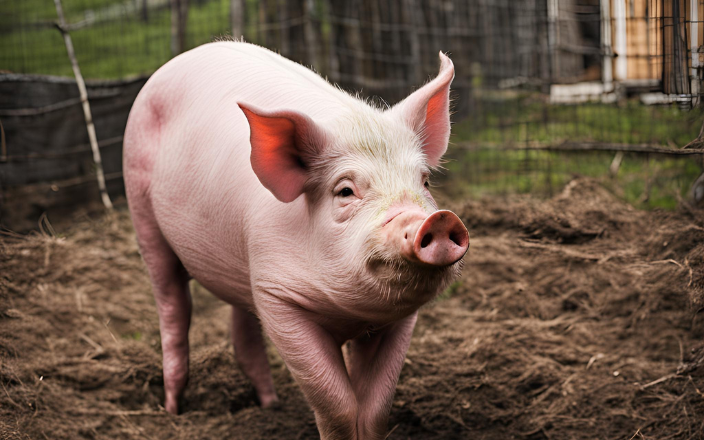A backyard pig in Oregon, USA, has tested positive for the H5N1 avian influenza virus. This marks the first instance of H5N1 being detected in swine within the United States. The discovery has raised several concerns among health officials and the agricultural community, given the potential implications for both animal and human health.
The discovery
The infected pig was part of a small, non-commercial farm in Crook County, Oregon. The United States Department of Agriculture (USDA) reported that the pig was tested out of an abundance of caution after H5N1 was detected in poultry on the same farm. The farm has since been quarantined to prevent further spread of the virus. Other animals on the farm, including sheep and goats, are under surveillance.
Why it matters
The detection of H5N1 in a pig is particularly concerning because pigs can act as “mixing vessels” for influenza viruses. This means they can be infected with both avian and human influenza viruses simultaneously, potentially leading to the emergence of new, more transmissible strains that could pose a significant threat to human health. Although the infected pig did not show signs of illness, the presence of the virus in swine highlights the need for vigilant monitoring and biosecurity measures on farms.
Current measures and public health risk
In response to the detection, the USDA and local health authorities have implemented strict quarantine measures on the affected farm. The infected pig was euthanized to allow for further diagnostic testing and to prevent any potential spread of the virus. Officials have emphasized that there is no immediate concern regarding the safety of the nation’s pork supply, as the farm is non-commercial and the animals were not intended for the commercial food market.
The Centers for Disease Control and Prevention (CDC) has stated that the current risk to the public remains low. Genomic sequencing of the virus from the infected pig and poultry has not indicated any mutations that would increase transmissibility to humans. However, the situation is being closely monitored, and additional updates will be provided as more information becomes available.
Broader implications
This incident underscores the importance of robust surveillance systems and biosecurity practices in preventing the spread of zoonotic diseases. The H5N1 virus has been responsible for significant outbreaks in poultry worldwide and has occasionally infected humans, often with severe consequences. The detection of the virus in a pig in the US highlights the interconnectedness of animal and human health and the need for a One Health approach to disease prevention and control.
In conclusion, while the detection of H5N1 in a backyard pig in Oregon is a cause for concern, the swift response by health authorities and the ongoing surveillance efforts are crucial in mitigating the risk of further spread. Continued vigilance and adherence to biosecurity measures will be essential in protecting both animal and human health from this and other emerging infectious diseases.
Sources: Available upon request.

